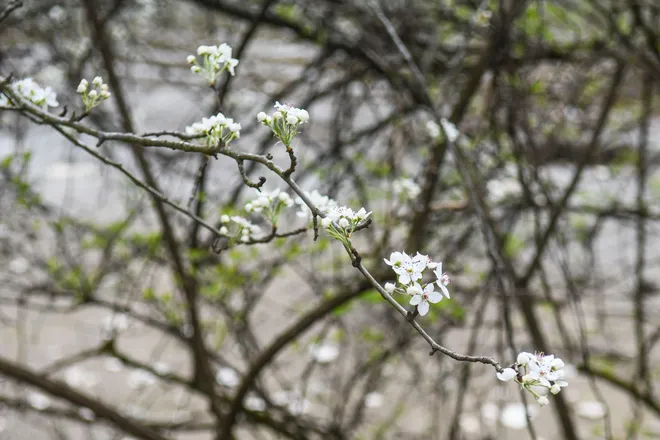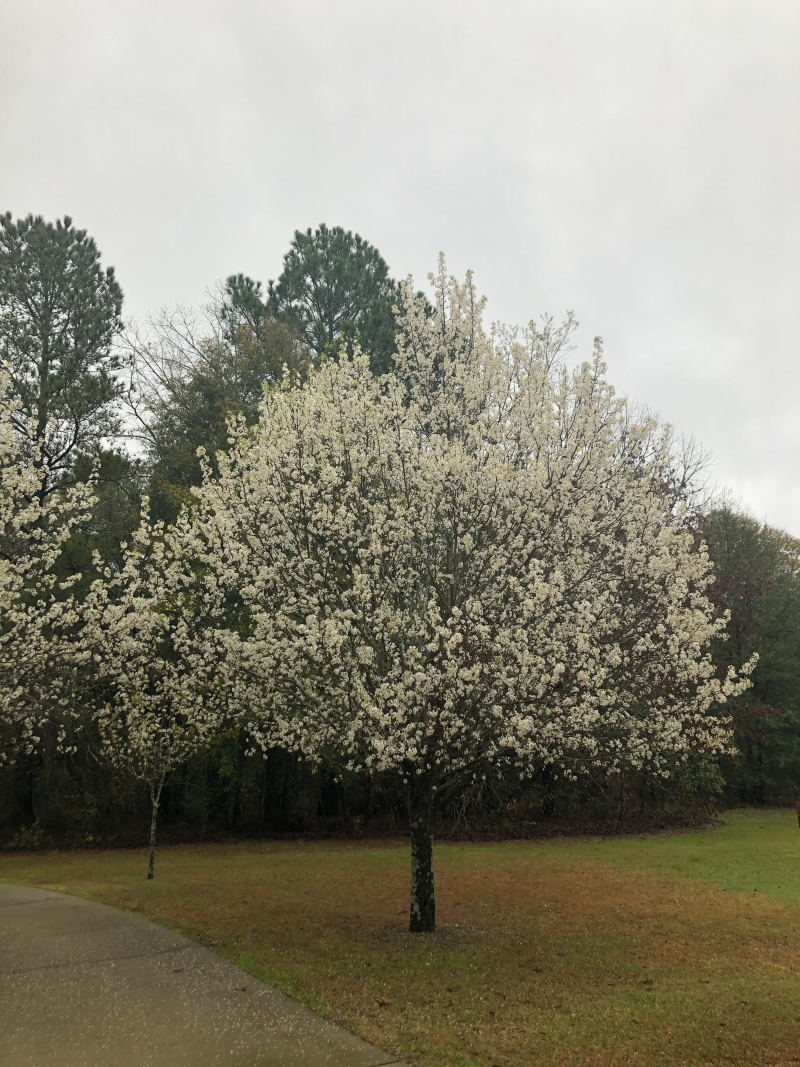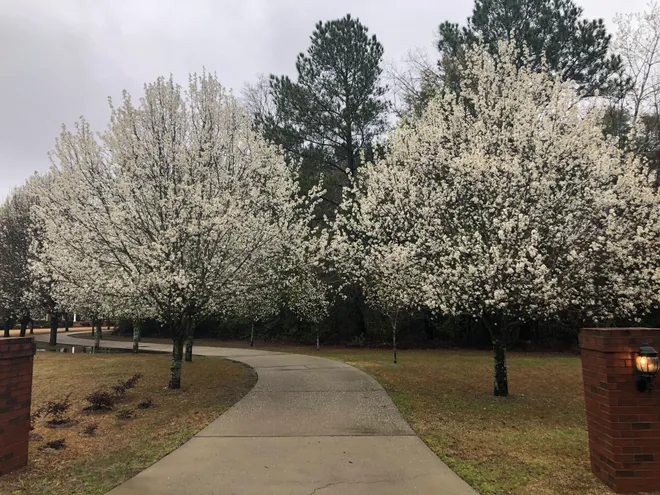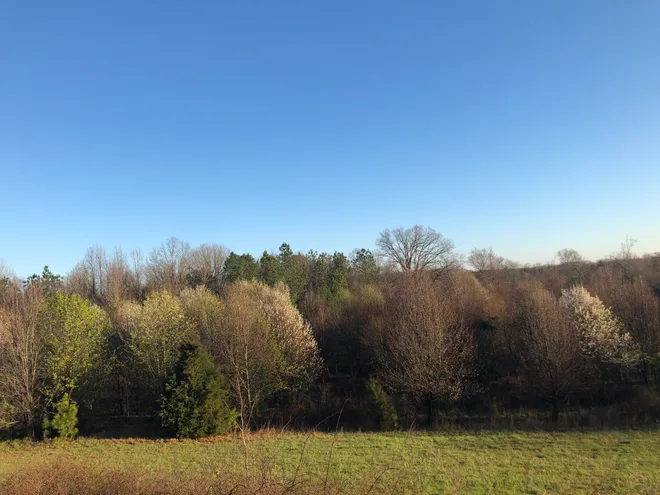Once a decorative darling, the invasive – and pungent – Bradford pear tree is on the outs

The Bradford pear tree is particularly eye-catching as spring kicks off and its blooms pop. But get close and a whiff of its blossoms may send you running.
An ornamental tree found across the U.S. from New York to California, the Bradford pear tree became a favorite for landscaping in the 1960s because it grew quickly, had bountiful blooms and aged with a nicely shaped canopy full of bright green foliage.
But it eventually became infamous because of its odor.
"It smells like a rotting corpse when it blooms," said Shannon Powers, press secretary at the Pennsylvania Department of Agriculture.
"Some people claim they can't smell it, which fascinates me, but I find it quite pungent," said David Coyle, an assistant professor of forest health and invasive species at Clemson University. "Some of the neighborhoods where they're planted widely are just so hard to be around in the spring. It's just, ugh."
Ohio banned the sale and planting of Callery pear trees in 2023, and Pennsylvania banned the trees in February. South Carolina will ban new Bradford pear sales as of Oct. 1. Other states are encouraging their removal and replacement with native trees.
Cicadas 2024:This year's broods will make for rare event not seen in over 200 years
When Bradford pear trees bloom? Why do they smell like fish?

Bradford pear trees bloom early in the spring and – thanks to a pre-spring heat wave in much of the East and South – they are already in bloom, just as are the famous cherry blossom trees in the nation's capital.
Yes, the trees can smell like fish, according to the Oklahoma State Extension Service. Others have described the smell as not just fishy but more like rotting fish, as well as urine and baby poop.
Over the last few weeks, many have been bemoaning the Bradford pear tree's smelly side on TikTok.
"This time of the year when they bloom these trees smell terrible, like just straight fish," east North Carolina resident Kimberly Hogge recently said on the app.
How did we get Bradford pear trees?
Bradford pear trees belong to the Pyrus calleryana (Callery pear) species. Callery pear tree seeds were brought to the U.S. from China in 1916 to help breeders create fruit-bearing pear trees more resistant to fire blight, a disease that destroys leaves and fruit, according to the U.S. Department of Agriculture's Forest Service.
"By doing that grafting they were able to make fruiting pear trees that were very resistant to fire blight," Coyle said. Continued experimentation with Callery pears led to the discovery of a tree that was "super flowery and kind of looks like a lollipop in its shape," he said.
That became the Bradford pear tree, named for Frederick Charles Bradford, who was the director of the USDA's Plant Introduction Station in Glenn Dale, Maryland, according to the Ohio State University Extension Service.
The tree became known as the "perfect neighborhood tree," notes the Virginia Department of Forestry.
But that's not the whole story on Bradford pear trees. There's something worse than their smell.

Why are Bradford pear trees bad?
It's not necessarily the Bradford pear tree that is bad, although the trees did tend to have a weak branch structure and were prone to splitting or cracking.
The initial Bradford pear trees planted were sterile – meaning the trees could not pollinate themselves to produce viable fruit. But over the years, other kinds of Callery pear trees arose, some created by plant breeders and others by nature itself.
Cross-pollination of Bradford pear trees and other Callery trees started happening. Because the Bradford tree shoots were grafted onto other types of Callery pear rootstock, occasionally those trees might crack and split and blossoms from the newly sprouted branches off the rootstock can cross-pollinate the rest of the tree.

All these actions led to a proliferation of Callery pear trees in the wild – and the trees began to produce fruit. Birds and other animals ate the fruit and their droppings spread the seeds.
That has led to rapid growth and spread of wild Callery trees, which pose "a major threat to native grasslands and their wildlife," says the Minnesota Department of Agriculture. "It can quickly fill in gaps in open spaces, which leads to native plants being crowded out as they cannot compete for resources."
The trees also don't make a good home for native insects, a minus for local birds, says the Nashville Tree Conservation Corps. And the trees' early blooming also takes sun away from other plants.
"These things will also really quickly take over pastures and old fields," Coyle said. "Some of the main calls we get is 'How to get rid of these things?'"

Follow Mike Snider on X and Threads: @mikesnider & mikegsnider.
What's everyone talking about? Sign up for our trending newsletter to get the latest news of the day
Disclaimer: The copyright of this article belongs to the original author. Reposting this article is solely for the purpose of information dissemination and does not constitute any investment advice. If there is any infringement, please contact us immediately. We will make corrections or deletions as necessary. Thank you.



